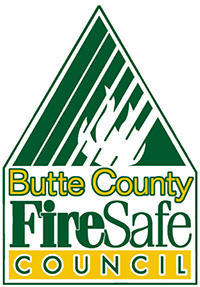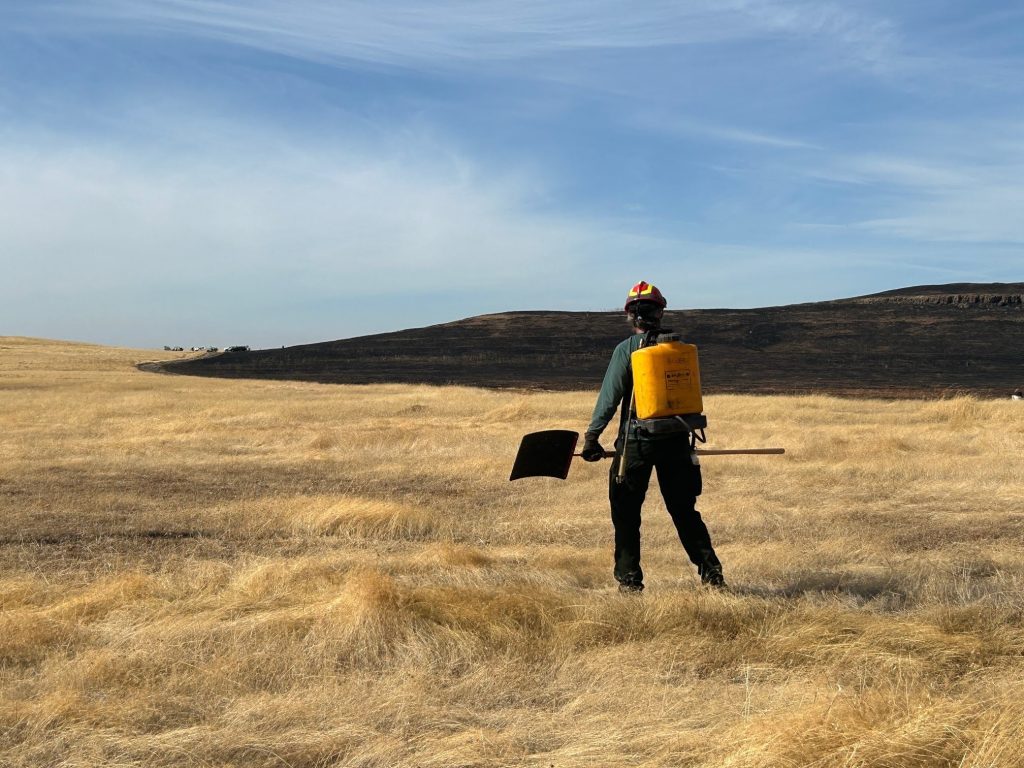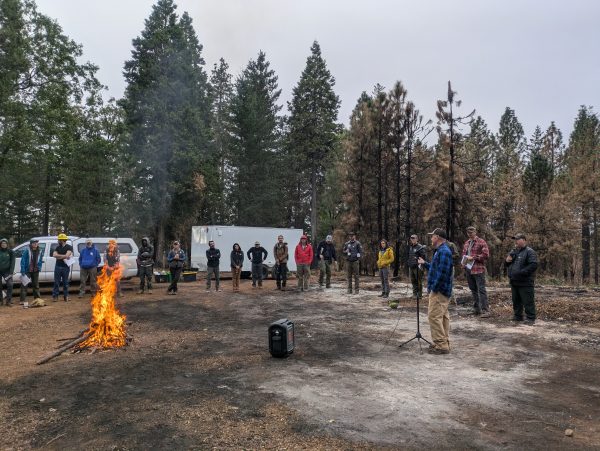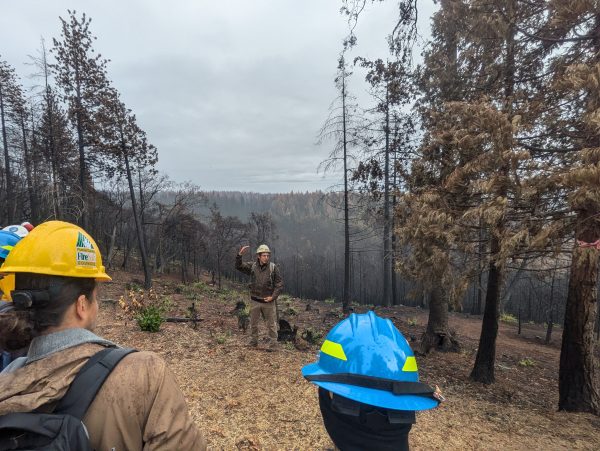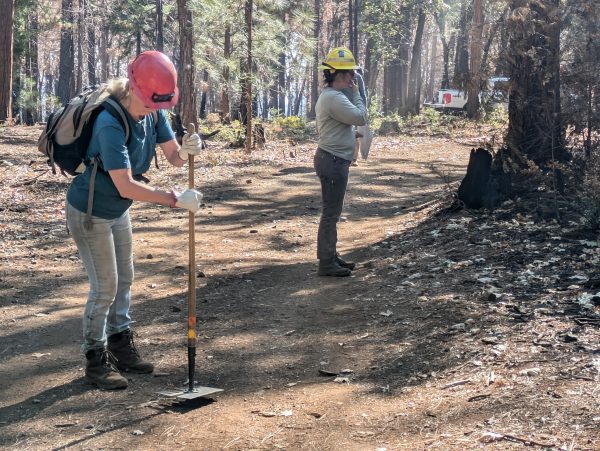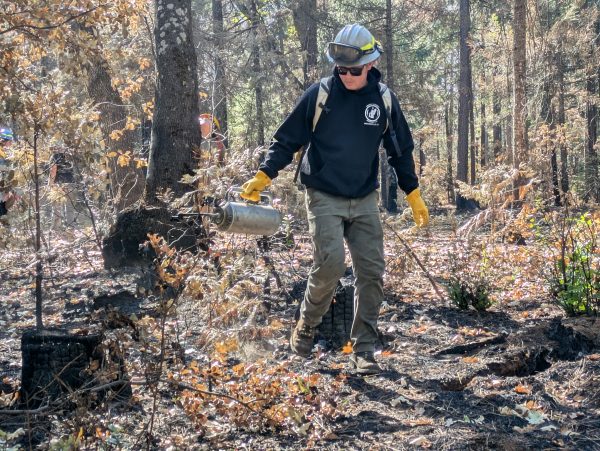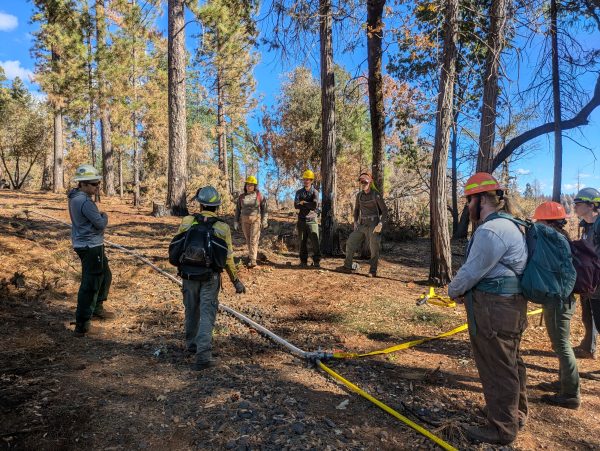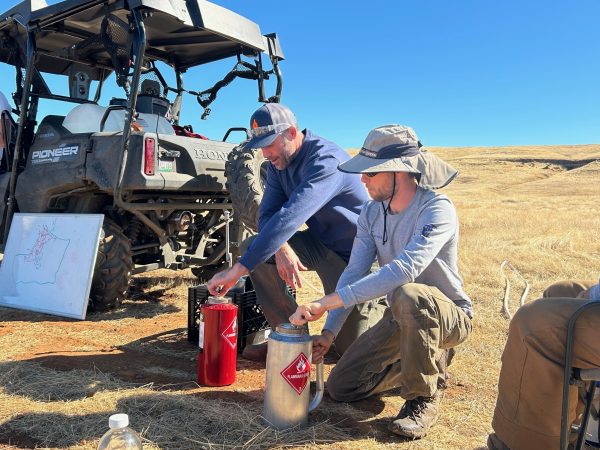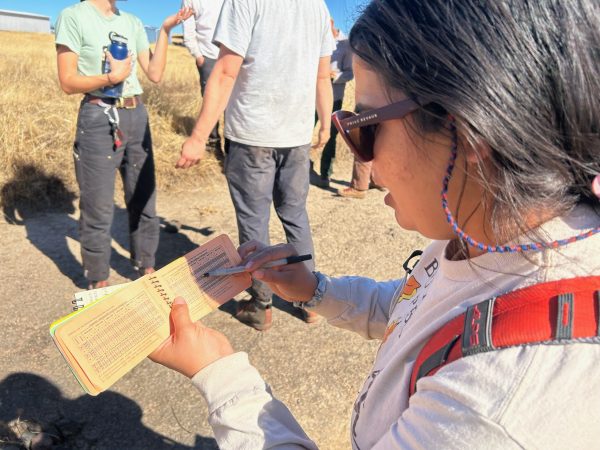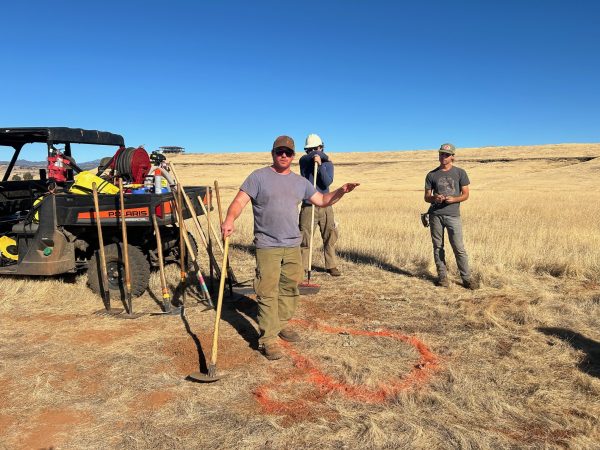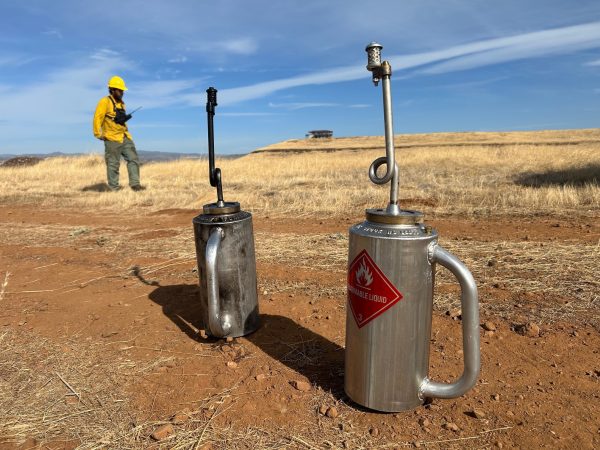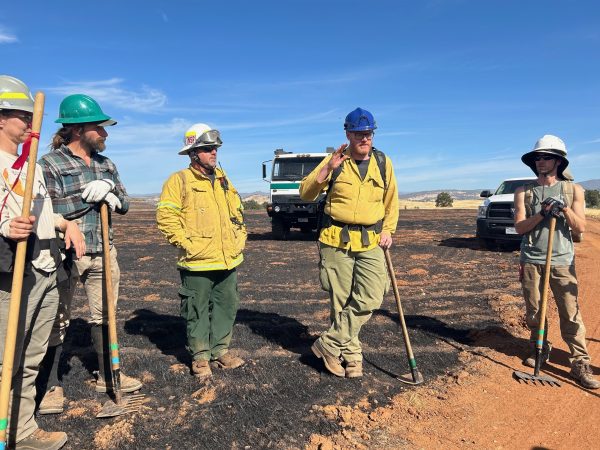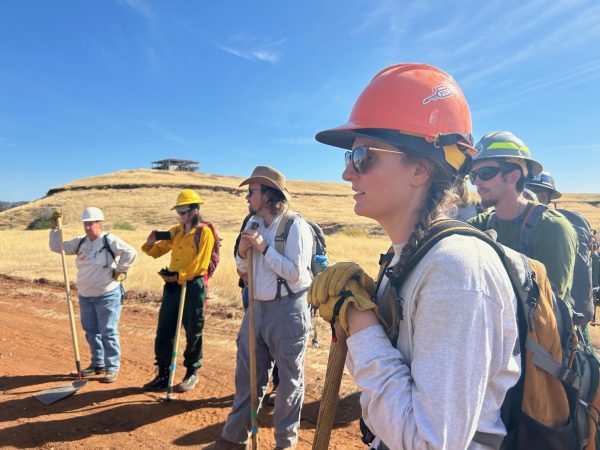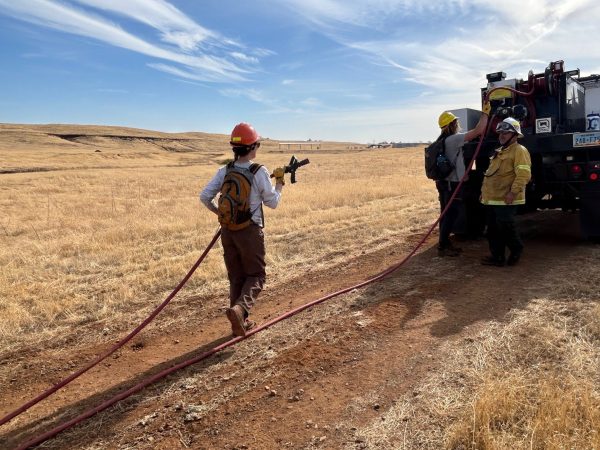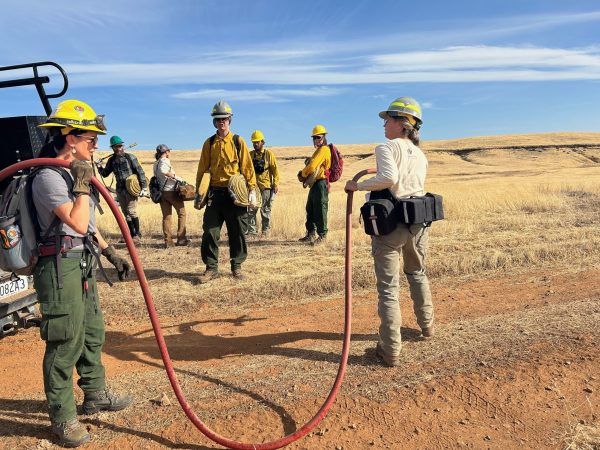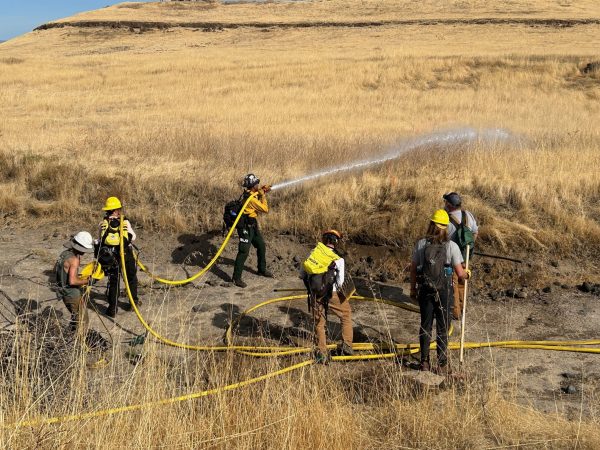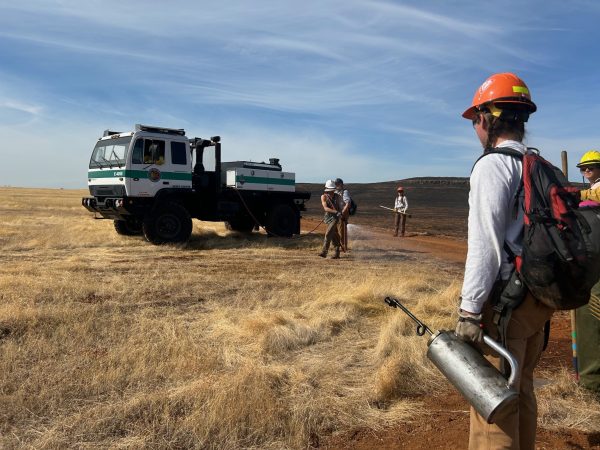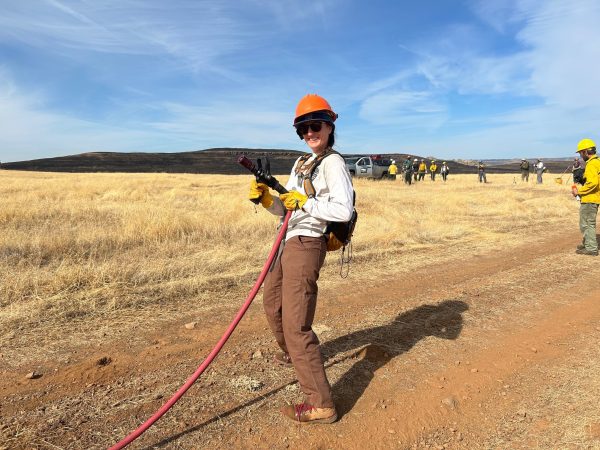The weekends of October 12th and October 19th, several Butte County Fire Safe Council (BCFSC) staff members joined nearly 50 “good fire” volunteers and advocates at the Prescribed Fire Training Exchanges in the foothills. The Prescribed Fire Training Exchanges (TREX), hosted by the Fire Networks, is a facilitated training event, founded on values of information sharing, cross-boundary collaboration, and prescription of beneficial burns. TREX events offer the skills, experience, and connections to progress on their fire journeys so that they can fill their roles in helping build a sustainable fire future. The event’s organizers provide experiential training that bolsters the capacity of local fire management organizations and fosters a more holistic perspective of the community’s relationship with fire.
On Friday, October 11th, participants had the opportunity to attempt the Work Capacity Test, or “pack test”, which is a 3-mile hike over level terrain carrying a 45-pound pack. In order to pass and qualify for the arduous work required of wildland firefighters, participants must complete the pack test in 45 minutes or less.
The first weekend took place at Maple Creek Ranch, which is owned by a member of the BCFSC team: Ron Ward. Ron has worked in partnership with the Fire Safe Council for several years to steward his land by applying fuels reduction techniques, like prescribed fire. Thanks to the Ron’s planning and efforts, and the hard work of wildland firefighters, Maple Creek Ranch survived the devastating impacts of the Park Fire. BCFSC and experts from CAL FIRE claim that the work that Ron had done on his property was a big help to wildland firefighters and had a major contribution to the protection of the “Cohasset Green Island”.
“The Park Fire was a devastating event for our community in Cohasset, CA, but thanks to the proactive work of the RCD and the Prescribed Burn Association the level of damage on our ranch and the broader Cohasset community was greatly reduced. Living on a 500-acre ranch, I personally witnessed how the fire, which initially raced up Mud Creek Canyon as a crown fire, transformed when it encountered areas where prescribed fire had been applied. In these treated areas, the flames dropped to the ground, making them far more manageable for Cal Fire to address.”
– Ron Ward, Maple Creek Ranch
Each morning of the first weekend, TREX organizers built a campfire which attendees could add pieces of wood to. The campfire symbolized the group’s common purpose in learning about “good fire” and contributing to a new age of resilient and restorative land management. It also served as an anchor point for the attendees to revisit and reflect on TREX’s mission to bring “good fire” back to the land and building a culture around educating fire practitioners.
On Saturday and Sunday, attendees listened to the expertise and testimonies of professional fire practitioners and associated land managers from the collaborating organizations in attendance. Speakers attested to the cultural significance and ecological importance of reintroducing “good fire” to Butte County. Participants also learned how to safely use fire-suppressing hand tools, how to communicate using proper radio etiquette during a burn, and how to effectively address a medical emergency during a fire, among other important skills.
“I enjoyed learning alongside so many of our partners, like Butte County RCD, BCCER, PBA, and meeting new people from outside of Butte County. The grant I am working on is at the Maple Creek Ranch, so it was insightful hearing different people’s thoughts on regenerative practices after a high severity fire, like the Park Fire that impacted the MCR and Cohasset.”
– Sarah Jo McDowell, BCFSC
The second weekend of the event took place at the Camelot Equestrian Center, which was graciously offered up for the prescribed burn training by the Mechoopda Tribe of Chico. On Saturday and Sunday, we had fast gusts of winds which limited the fire activities that the group could partake in. The prescribed burn that TREX organizers had intended to serve as a learning opportunity was postponed until the weather was better suited for a controlled burn. Attendees instead rotated through workshop stations which addressed varying aspects of prescribed fire planning and execution.
Representatives from the Healthy Forest Alliance kicked off the day with an outline of the objectives and logistics of prescribed fire implementation. They explained the importance of making public information about planned burns available and accessible, and the necessity of knowing the chains of command under a burn boss, prior to a burn.
“I enjoyed breaking into teams and building relationships. My biggest takeaway is I understand how hard it is for a burn to go through. Having been on the flagging teams for before our burn units in Magalia, I have a much better understanding of why we flagged.”
-Mitchell Jensen, BCFSC
Wildland firefighters, representing the Wildland Fire Lessons Learned Center and the Big Chico Creek Ecological Reserve (BCCER), educated attendees on the anatomy and behavior of a progressing wildfire. They also addressed the conditions and qualities of a operation that they would consider as burn bosses, prior to igniting a controlled burn. Nearby, a separate group of wildland firefighters trained volunteers on proper safety and communication in a fire. Participants also learned about the various tools that are used to control a prescribed fire, and how to effectively use them.
Representative from the The Watershed Center, The Nature Conservancy, and BCCER joined forces and instructed attendees on the role and duties of a Fire Effects Monitor (FEMO) on a burn site, which include collecting information on the weather patters, humidity, smoke behavior, flame height, topography, and other key aspects before, during, and after the burn. They also guided participants through calculating the Probability of Ignition (POI), which burn bosses use to anticipate the likelihood of a controlled burn accidentally igniting a neighboring piece of land.
“It was so inspiring to be among so many people who care about our community and are working to bring good fire back to our land. I learned a lot and had so much fun while doing it. I learned how to use pumps, how to lay hose, and how to communicate properly using radios.”
– Ashley Turner, BCFSC
Finally, key speakers from the Mechoopda Indian Tribe of Chico described the recent reclamation of tribal land south of Chico by the Mechoopda Tribal Council in the recent decades. With land rights returned to the tribe, land managers can now reintroduce “cultural” controlled burns to these grasslands and their native fire-adapted plant species. Many original sources of nutrients for the native Mechoopda people were adapted to and dependent on natural wildfires for germination or pest suppression. The speakers explained that autonomy over and management of this land by tribal members is imperative for the preservation and continuance of Mechoopda culture. Organizers of the TREX event concluded the day by extending an invitation to participate in future prescribed burns and reflect on California’s relationship with fire.
“Good fire” plays a key ecological role in California, but its suppression for over a century has become a contributing factor in the overgrowth of vegetation that leads to severe wildfires. Historically, these fuels were reduced by regular intervals of fire, resulting from lightning ignitions and cultural burnings. BCFSC and our partners strive to utilize multiple fuels reductions tools, including “good fire” to build the wildfire resiliency of Butte County. Through pile burning and broadcast burns, BCFSC contributes to the forest health resilience efforts in our county.
To learn about upcoming broadcast burns and pile burns:
